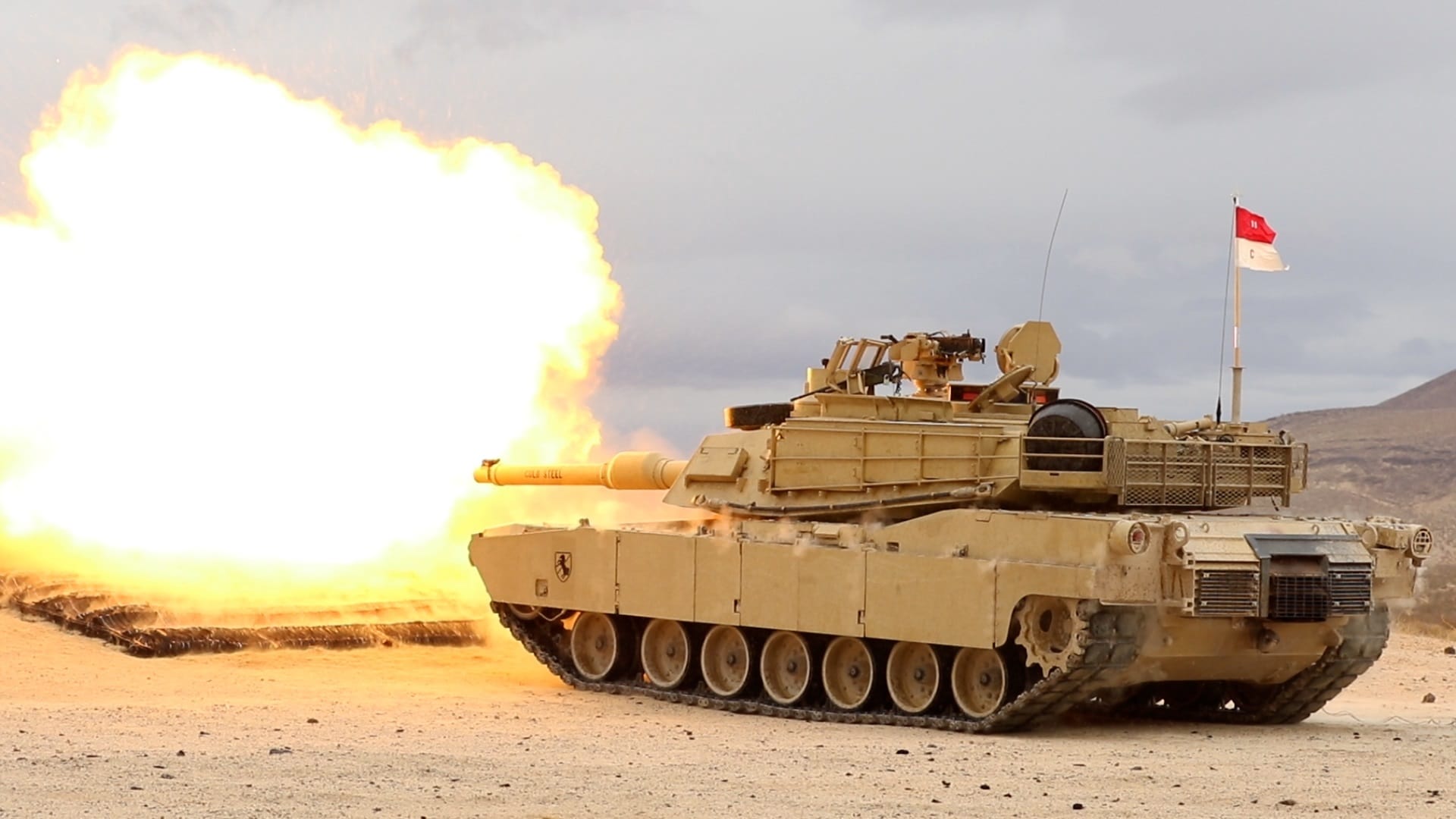Last month, the British government confirmed that it would provide Ukraine with armor-piercing rounds containing depleted uranium. In response, Russian president Vladimir Putin cautioned that the Kremlin would “respond accordingly given that the collective West is starting to use weapons with a ‘nuclear component.’”
As a byproduct of the uranium enrichment process required to create nuclear weapons, the armor-piercing rounds do retain minimal radioactive properties. However, Moscow is falsely claiming that the UK, along with its Western allies, are providing Ukraine with weapons that could generate a nuclear reaction. Putin has threatened the potential for nuclear warfare on several occasions since the onset of the Ukraine invasion. Kremlin officials have also warned that a “global catastrophe” could emerge and that NATO “wouldn’t dare” strike Moscow even if nuclear weapons were indeed used in Ukraine.
What is Depleted Uranium?
Uranium has to be enriched in the U-235 isotope, which is responsible for nuclear fission, in order to produce an adequate amount of fuel for some types of nuclear weapons and reactors. As explained by the International Agency for Atomic Energy (IAEA), “During the enrichment process the fraction of U-235 is increased from its natural level (0.72% by mass) to between 2% and 94% by mass. The by-product uranium mixture (after the enriched uranium is removed) has reduced concentrations of U-235 and U-234. This by-product of the enrichment process is known as depleted uranium (DU). The official definition of depleted uranium given by the US Nuclear Regulatory Commission (NRC) is uranium in which the percentage fraction by weight of U-235 is less than 0.711%.” One notable quality depleted uranium possesses is its density. This element has been used for projectiles since it is denser than lead.
A Brief History of Depleted Uranium and Projectiles
Enriched uranium was originally manufactured when the U.S and the UK first began their respective nuclear weapons programs in the 1940’s. As the Cold War progressed in the second half of the twentieth century, the U.S. found another purpose for its depleted uranium stockpile. Intelligence suggested that the Soviet military had produced new armor plating for its main battle tanks (MBTs) that even North Atlantic Treaty Organization (NATO) ammunition could not penetrate. After searching for an adequate material to strengthen its armor, the U.S. army began incorporating depleted uranium into armor-piercing rounds.
Since then, the U.S. military added this material to composite tank armor and various munitions used to target enemy armored vehicles. When fired, a depleted uranium projectile becomes “essentially an exotic metal dart fired at an extraordinarily high speed,” according to RAND senior defense analyst Scott Boston.
Depleted uranium rounds were first used by U.S. and NATO militaries during the Gulf War and were subsequently used in the Bosnia War, the invasion of Iraq, and 2015 airstrikes targeting ISIS in Syria. The U.S. military continues to develop depleted uranium munitions, including the M829A4 armor-piercing round for the M1A2 Abrams MBT.
Russia is Exaggerating the Capabilities of Depleted Uranium
Although depleted uranium munitions are not considered to be nuclear weapons, they do emit low levels of radiation that could lead to exposure if handled for too long or without caution. Russian officials have claimed that this toxic chemical is in fact parallel to nuclear weapons, however.
A speaker of the Russian parliament warned that if the UK does supply Ukraine rounds containing depleted uranium, a “tragedy on a global scale” would erupt and primarily impact the European continent. The UK Ministry of Defense has defended its decision to supply Ukraine, citing that the British army had used these types of munitions in combat for decades.
Several Western nations, including the UK, are set to deliver dozens of modern MBTs to Ukraine over the next few months. The depleted uranium rounds will complement Britain’s shipment of 14 Challenger 2 tanks. Since the start of the war, Russia has lost staggering numbers of armored vehicles. Already fearful of Ukraine’s pending influx of formidable MBTs, the UK’s depleted uranium announcement is likely further worrying the Kremlin. Moscow’s animosity and fear-mongering concerning the armor-piercing munitions has more to do with its own equipment shortcomings than it does genuine nuclear concerns.
MORE: Video – Ukraine Has Massive New NATO ‘Cannon’ Ready To Fight Russia
MORE: ‘Americans Will Pay The Price’: One Democrat Is Angry At Joe Biden
MORE: Could Joe Biden Get Impeached?
Maya Carlin, a Senior Editor for 19FortyFive, is an analyst with the Center for Security Policy and a former Anna Sobol Levy Fellow at IDC Herzliya in Israel. She has by-lines in many publications, including The National Interest, Jerusalem Post, and Times of Israel. You can follow her on Twitter: @MayaCarlin.

